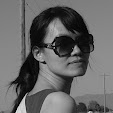[SWEDEN] Stockholm Metro

Stockholm metro system is said to be the world's longest art exhibit, stretching 110km long. It is also very affordable. For the price of a Stockholm Metro ticket, you get to see sculptures, mosaics, paintings, art installations, inscriptions and reliefs at most metro stations (over 90 of the 100 stations).

I bought a 24 hours Stockholm Travelcard for 120 SEK per adult at the SL Center near T-Centralen station. (*the price has increased to 125 SEK starting from 9 Jan 2018).

The SL Center is just a short 5 minutes’ walk from T-Centralen station. You can also buy the same pass at T-Centralen station, however it’s cheaper to buy it at the SL Center (cheaper by 20 SEK).

There are three metro lines: Red, Blue and Green. See the rail network map in Stockholm above (click to enlarge).
SL Centers (marked as ‘i’ in the map) are located at the T-Centralen, Gullmarsplan, Fridhemsplan and Tekniska högskolan metro stations.
If you buy the Travelcard, the train line to the airport is not valid. You need to pay supplemental fee for it.

This is the T-Centralen station for Green line. T-Centralen is the main hub of Stockholm’s metro. It was also the first station to feature artwork.

I took the metro from T-Centralen to Brommaplan station (Green line) before taking a bus to visit Drottningholm Palace.



Brommaplan station is not an underground station and it doesn’t have any special design.


Next is the Slussen metro station. This is the station near Fjallgastan view point. It has a simple mosaic design.

From Slussen metro station, I reached Östermalmstorg station (Red line).

Östermalmstorg is the third deepest station in Stockholm’s metro system. The station, completed in 1965, lies in the heart of the city’s poshest and most expensive boroughs; Östermalm.

The centerpiece is Siri Derkert’s sketches adorning the white station walls. You will see portraits of people that had been working for the environment and with women’s rights issues.

Exiting Östermalmstorg metro station.

On the next morning, after visiting the Town Hall, I took the metro from Rådhuset to Kungsträdgården metro station (Blue line) before taking Tram No.7 to Vasa Museum.

The station is quite deep with long escalators.

The station wall of Rådhuset is exposed bedrock painted in brownish red, giving it a rock tunnel appearance.

Made a short stop at T-Centralen station (Blue line) to admire its design before continuing to Kungsträdgården station.

T-Centralen station (Blue line) is quite literally “the blue platform”. The artist Per Olof Ultvedt wanted to create a calming atmosphere because this is a station where people are in a hurry, changing trains to another metro line.

The blue color together with the simple motifs (stylized flowers and leaf creepers) gives passengers pause and a chance to clear their mind.

The blue ceiling is quite a unique sight. It is one of my favourite metro station in Stockholm.

Kungsträdgården metro station is one of Stockholm’s most stunning stations. For now, it is the terminus of the blue line, until its southward extension opens in 2025. Its colour scheme is red, white and green.

It looks like an archaeological excavation with the remains of the old Stockholm Makalös palace.

The statues around the station are actually replicas of Makalös Palace’s exterior art.

Another unique feature of Kungsträdgården is its unique flora and fauna. The station is the only place in Northern Europe where the cave-dwelling Lessertia dentichelis-spider can be found. The cave-dwelling spider has lived on the station's walls ever since it opened for service in the mid-1970s, but scientists don't know exactly how it got there. Presumably, it traveled on machines and excavation equipment from Southern Europe that was used during the construction. I didn’t see one though. In 2016, scientists conducting a survey of the metro's wildlife discovered two previously unknown species of fungi covering the station walls.


Relics rescued from the redevelopment of central Stockholm during the 1950s and 1960s at one of the entrance.

Another long stretch of escalators to reach the top.
If you have plenty of time to spare, I would recommend you spend a few hours exploring other interesting design of Stockholm metro stations.
If you're short of time, I would recommend to buy a single ticket (valid for 75 minutes from time of stamping) at T-Centralen and take the blue line to see the art at Rådhuset and Kungsträdgården stations.

Even if you’re not particularly interested in the art of the metro stations, you will still probably use the Stockholm Metro when getting to its attractions.
A few useful metro stations to tourist:
T-Centralen (all lines) - the main hub, all lines go through T-Centralen
Rådhuset (Blue line) -City Hall
Kungsträdgården (Blue line) – transfer to tram no.7 to Vasa Museum
Östermalmstorg (Red line) – Östermalm shopping district
Gamla Stan (Red line) - Gamla Stan (old town)
Slussen (Red line) – Katarina elevator and view point
Brommaplan (Green line) – transfer to bus 301-323 to Drottningholms Palace




![[MALAYSIA] How To Do A Self Guided Walking Tour in Kota Kinabalu](https://blogger.googleusercontent.com/img/b/R29vZ2xl/AVvXsEgR_cJjX4Shl9rsz0ufzxjmtLMq5PAvmTNDHypSVV2CYDaarZVj8EMznRkXqdVeCGg2yEMdFqPtI5rvrmMtJVSL1W9jqOtdCM2EFAc5ZTWn7XzPQV5sqS4s1DO0T_AuF0nq_dLQ53b9-ju3yyLJUrvU2TlhbmD4rDDV5-aPFaT2WEQZ1c257JXGUhyfsw/s72-c/20220524_131141.jpg)
![[FRANCE] My Favourite Paris Eiffel Tower Photo Spots](https://blogger.googleusercontent.com/img/b/R29vZ2xl/AVvXsEi220KHLfBDpyO53KorHwAb0KQEuiiaVDlrFYwEEAvs8YvKb-Edmyt7Hl7rZszN6qc-GM4e3SmjBS2pUiCiv8ljl8mnrUR93Ljxb0xGrSZ4sZLPRErpbAj29btKvnIC67xV93iKnrH3QRcc/s72-w781-c-h505/DSCF4372.JPG)
![[JAPAN] Osaka Universal Studio](https://blogger.googleusercontent.com/img/b/R29vZ2xl/AVvXsEilW88BKY24KkvC4WjRfTktmxFmylxMsDD8emYT93x8bOlgqzMV1feAp28Si_GPn3hyFD2E97CMmP3X6kceDfFa9WB_7qr2BFvmu20iVJRaNlZd1BfoyUUj5ZgofOgK5lZGoqVDS4-1YLTo/s72-c/?imgmax=800)


![[MONACO] How To Visit Monaco In One Day From Nice](https://blogger.googleusercontent.com/img/b/R29vZ2xl/AVvXsEgZkJeVAOmz4LTRwY2uDTK131UJVUWH_44GUUU3H-ni63dK2BlNqITBIh5Tdcpz9kXTUb7ePW7f-PQ1Y7E6B4lnqKEHs_nL3Eop-ouoFhxayMI4lNCcUG-oJnGMVwpGDlBu8lfgn10H_QHw/s72-c/DSC06605.JPG)

![[MOROCCO] My Day Trip to Blue City of Chefchaouen From Fez](https://blogger.googleusercontent.com/img/b/R29vZ2xl/AVvXsEh-7PIqgkIbF1BtTIOwfZ2R611OUrvV7f4Uxih57is62V_QD_DySCdifgR250MMruySrRmV7UMQ14iRsQZ6ifAaAWTqYacWSu__Lpm6QuqEjUcMZ4IJz-0SLDKeCV-nn6Zk1qbyMtMaZf4YupMArl4gXmmXoQUxHc6T-_eW-X2jvjh47rlu4Ddq4_Q48g/s72-c/DSC07946.JPG)
Thank God I came across your blog as I am leaving for Sweden next week. I am sure your blog will be of great help. Thank You Sweden visa team for your efforts in materializing things for me.
ReplyDelete